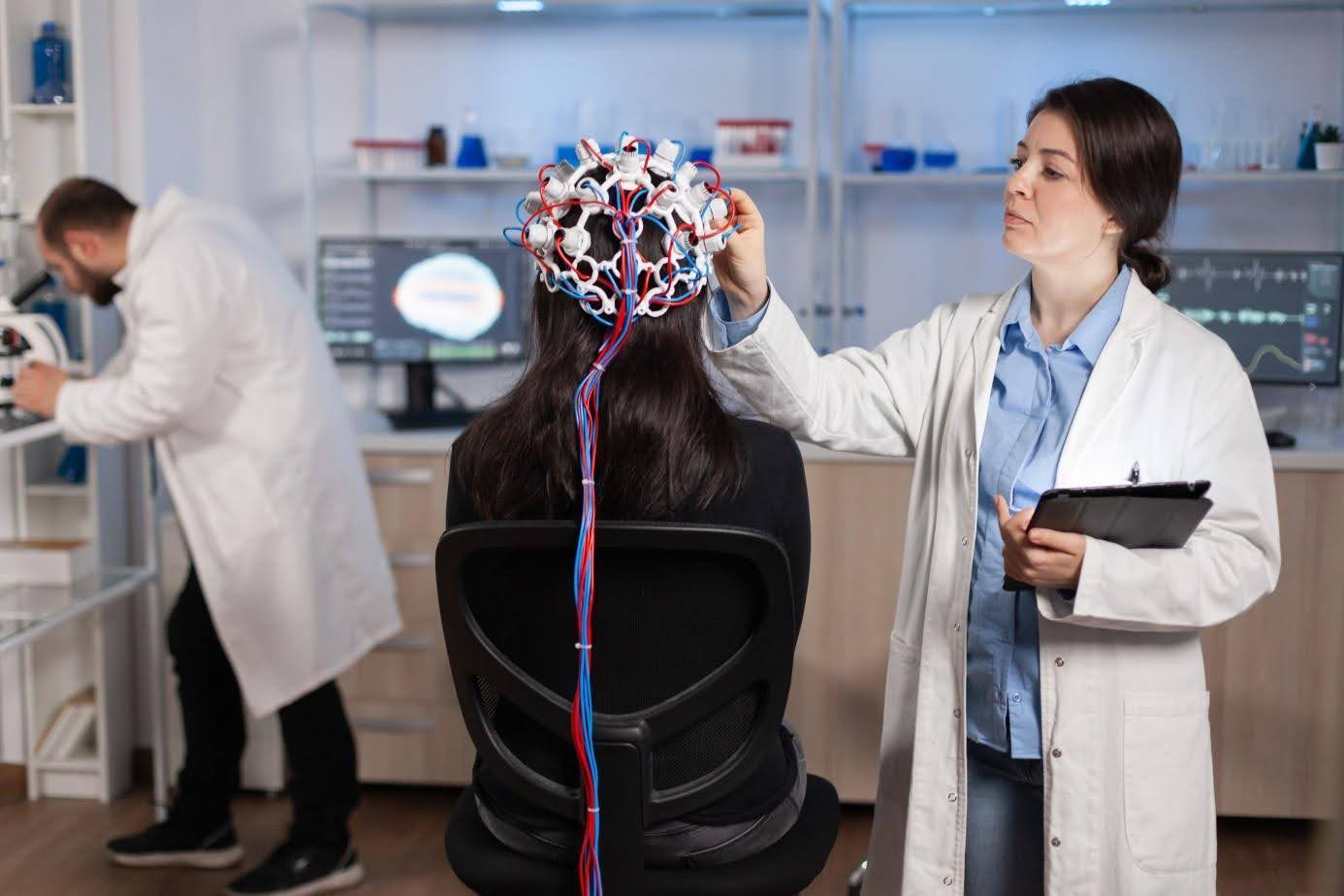
Neurofeedback has fascinated researchers for several years, as this technique offers the possibility of improving attentional and cognitive performance. This approach allows brain activity to be trained to enhance well-being. Its origins lie in various scientific discoveries. By combining neuroscience with technological advancements, it offers a natural method to understand better and optimize brain function. Discover the evolution of neurofeedback through history and scientific exploration.
Neurofeedback – From Early Discoveries to Modern Techniques
The origins of neurofeedback can be traced back to the late 19th century. In 1875, British physician Richard Caton made a groundbreaking discovery: brain electrical activity is linked to mental activity. In the 1920s, German neuropsychiatrist Hans Berger confirmed this observation by recording the first human electroencephalogram (EEG). He established the connection between cognitive activity and brain waves, paving the way for the development of this technique.
- The Neurofeedback Pioneers of the 20th Century
Following these early discoveries, the work of doctors Joe Kamiya and Barry Sterman marked the true beginning of neurofeedback. In the 1950s and 1960s, Kamiya demonstrated that individuals could learn to alter their brain activity, particularly alpha waves, through a reward system.
Meanwhile, Sterman trained cats to increase their sensorimotor rhythm (SMR). In the 1960s, his research for NASA revealed that SMR brain training helped protect against seizures, laying the foundation for its use in treating epilepsy. This technique is still part of astronaut training today. Neurofeedback continues to be used in aviation today, particularly to improve pilots’ attention.
- Optimizing the Technique with qEEG
The rise of computer technology in the 1970s and 1980s marked a turning point for neurofeedback. The development of quantitative electroencephalography (qEEG), led by pioneers such as Frank Duffy, E. Roy John, and Robert Thatcher, made it possible to analyze and compare individual brain activity with normative databases. This ability to obtain an objective view of brain wave patterns increased the scientific credibility of neurofeedback, enabling the identification of specific patterns related to various conditions and the development of personalized protocols.
- High-Performance Technology
As neurofeedback continued to evolve in the digital age, it began relying on precise assessment tools like qEEG, which typically uses 19 electrodes to map brain activity accurately and objectively. This technology enables targeted training for a wide range of applications, from symptom relief to optimal performance enhancement. Innovation is ongoing, with developments like smart glasses inspired by those used by NASA, making brain training more accessible and integrated into daily life. Neurofeedback is a dynamic field, now practiced by thousands of professionals worldwide.
Neurofeedback in Light of Scientific Research
Neurofeedback is an effective solution for improving symptoms across a wide range of difficulties:
What Does Research Say About Neurofeedback for Supporting Individuals with ADHD?
Numerous scientific studies have been conducted using neurofeedback. The results suggest that this approach shows promise in supporting individuals with ADHD. This method helps individuals self-regulate their brain activity. Neurofeedback targets brainwave patterns often altered in ADHD, such as excessive theta waves or underactivation of specific brain regions. Research indicates that it can lead to significant symptom improvements with little to no side effects. Its benefits tend to be stable and long-lasting, making it a valuable complementary tool for addressing ADHD symptoms.
Examples of Studies on Neurofeedback for ADHD:
Scientific Studies on the Effectiveness of Neurofeedback for Anxiety and Depression Management
Scientific research suggests that neurofeedback provides improvements when supporting individuals dealing with anxiety and depression. Many studies have explored its use, particularly in cases of depression, where protocols like alpha asymmetry have shown significant symptom reduction and improved impulse control. Neurofeedback training has also been linked to reduced symptoms in treatment-resistant depression, with measurable changes in mood-related brain regions. These benefits can be significant and long-lasting, even as a complement to psychotherapy.
Examples of Studies on Neurofeedback for Stress, Depression, and Anxiety:
Cantor, D.S., Stevens, E. (2009). QEEG correlates of auditory-visual entrainment treatment efficacy of refractory depression. Journal of Neurotherapy, 13(2), 100–108.
Scientific Studies on Neurofeedback and Addictions
Scientific research also indicates that neurofeedback is an effective technique for supporting individuals struggling with addictions. Preliminary studies explore the potential of neurofeedback in this context:
- The use of EEG as a complement to addiction treatment for certain addictive substances has shown significant changes post-treatment and may help improve treatment retention.
- Long-term follow-up of the Peniston Protocol for chemical dependency also reports notable improvements, including a reduction in depression and a high, sustained abstinence rate.
These results suggest that neurofeedback may offer significant benefits in managing addiction for affected individuals.
Examples of Studies:
A Solution for Chronic Fatigue According to Several Studies
Scientific studies show that neurofeedback is an innovative solution for improving sleep in individuals suffering from insomnia, one of whose symptoms can be chronic fatigue. This technique teaches individuals to regulate their brain activity better to promote easier sleep onset and higher quality rest. Some preliminary research reveals noticeable sleep improvements with lasting effects.
The concept of neuroplasticity—the brain’s ability to adapt and reorganize its activity—is studied as a key component in managing insomnia. By enhancing this ability, it may be possible to alleviate sleep difficulties and significantly improve nighttime recovery. Thanks to these advancements, neurofeedback opens promising perspectives for those seeking restful, restorative sleep.
Examples of Scientific Studies Conducted:
Bell, J. S. (1979). The use of EEG theta biofeedback in the treatment of a patient with sleep-onset insomnia. Biofeedback & Self Regulation, 4(3), 229–236.
Conclusion
Neurofeedback is a technique that helps the brain better self-regulate in real time using visual or auditory signals. This method shows strong potential for addressing various symptoms—from anxiety and ADHD to sleep difficulties. Although the field is still evolving and further research is needed, it offers a wide range of promising avenues to improve health and well-being across all generations. Talk to a professional to better understand how neurofeedback could help you.



